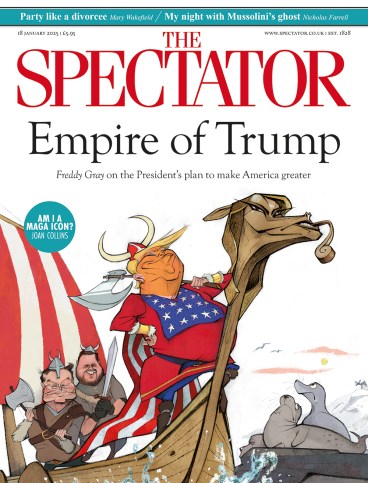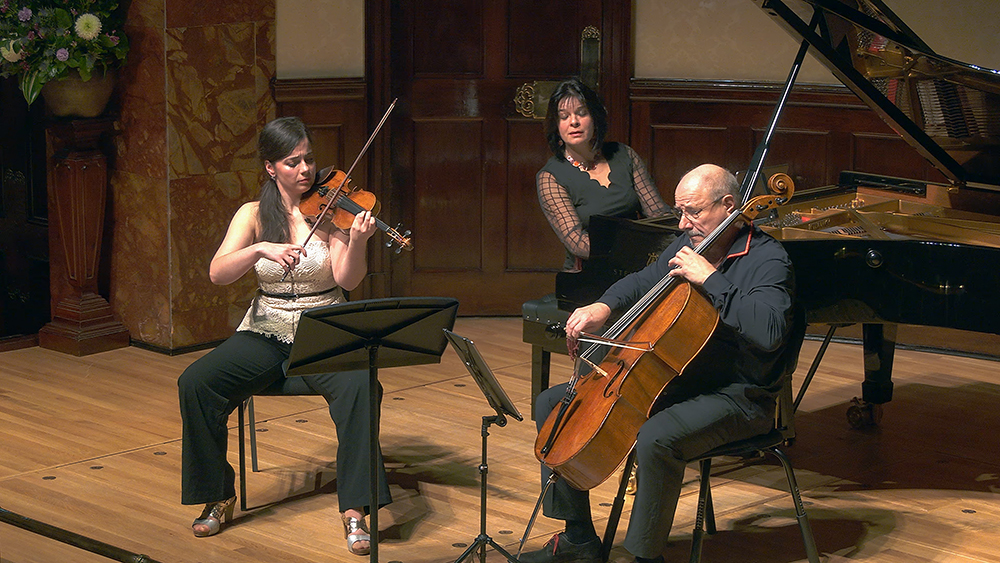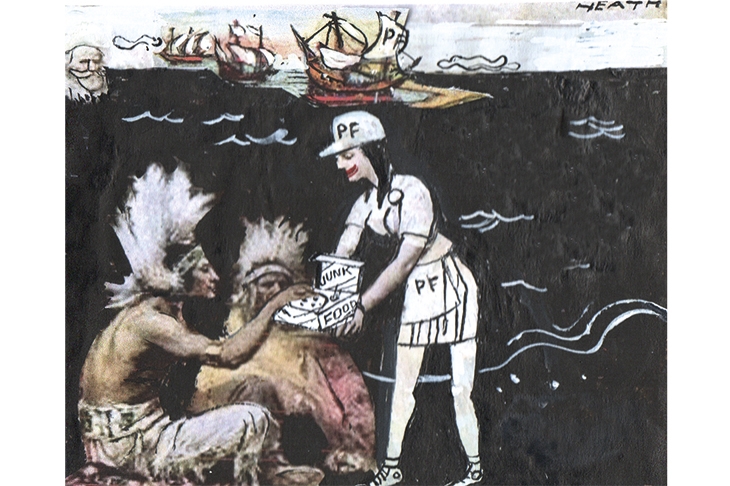
It’s a right mess, the classical piano trio; the unintended consequence of one of musical history’s more frustrating twists. When the trio first evolved, in the age of Haydn, the piano (or at any rate, its frail domestic forebear) was the junior partner, and the two string instruments, violin and cello, were added to make the silly thing audible. Then the piano started to evolve, while its partners – give or take the odd tweak – really didn’t, much. The end result, by the second half of the 19th century, completely reversed the original balance of power, leaving the two string instruments thrashing for dear life against the onslaught of that glossy, black, all-devouring monster, the modern concert grand.
When their pianist Jitka Cechova needed to glitter, she scattered diamonds rather than confetti
Unfair? I don’t make the rules. I played in a piano trio as a teenager; we had a delightful, unselfish pianist and it isn’t until you lose one of those that you realise how incredibly rare they are, at least in amateur and student circles. Since the era of Beethoven, most piano trios by major composers have assumed a virtuoso at the keyboard. Combine that with the industrial-strength brilliance of a new Steinway and professional trios now face the same basic problem every time they sit down to play: how to prevent a tyrannosaurus tail wagging a chihuahua-sized dog.
Typically, the solution hangs on the skill – and the civilised impulses – of the individual pianist, and in their early January recital at the Wigmore Hall the Smetana Trio seemed to have found their own distinctive compromise. An ensemble carrying this name has been active in Czechoslovakia and its successor states for more than 90 years, and although the current line-up is a bit more recent, they sounded comfortable enough in their own skin. Their solution involved leaning in to the individuality of the three players. When their pianist Jitka Cechova needed to glitter – and in the scherzo of Arensky’s First Piano Trio, glitter is practically a structural feature – she scattered diamonds rather than confetti.
For the most part, though, she kept a lid on the more strenuous passages of this mostly Romantic programme, and she didn’t sound as if she was having to work particularly hard to do so.
Cechova’s playing provided a solid base-level for the group, allowing the violinist Marketa Janouskova to spool out yard upon yard of throaty, high-calorie lyricism and the cellist Jan Palenicek, curiously, to do almost the exact opposite: replying in terse, mellow phrases where Janouskova had laid down gleaming full-bodied song. The curious thing is that it worked. The ebb and flow and the conversational exchanges seemed wholly natural, even if the individual voices were so markedly different.
It was a gorgeous programme, too, with only the Arensky – which, if you don’t know, you should treat yourself to as a matter of priority; it’s in the Tchaikovsky class – being remotely close to standard repertoire. Suk’s Trio Op.2 had an open-hearted ebullience and the Smetanas found lots of daylight and shade between the surges and motor-rhythms of Martinu’s postwar Second Trio. They didn’t quite make a case for Vitezslav Novak’s episodic, 1902-vintage Trio ‘Quasi una ballata’, but then, I’m not sure anyone could. At least they tried.
Still, we can all breathe a lot more easily when the piano is left to its own devices (or, if you prefer, the problem is contained) in a solo recital. A few days later, Alim Beisembayev played on that same tiny stage, and the Wigmore – which looked about half-full for the Smetanas – was packed. No surprise there: since winning the Leeds competition in 2021 Beisembayev has become a word-of-mouth phenomenon, an artist whom even critics discuss among themselves with unfeigned admiration (and not just the piano-heads, either).
Disarmingly, in our age of reality-TV virtuosos and would-be keyboard philosophers, Beisembayev seems wholly without an agenda beyond the music itself. He walked on in plain concert black, bowed his head and started to tease Haydn’s F minor Variations out of the silence.
To describe Beisembayev’s playing as selfless might suggest that it lacked colour; and yet the final chord alone of Schumann’s Kinderszenen is still hanging, hushed and pregnant, in my memory. To praise the purity of his playing is to ignore the endless, idiosyncratic little adjustments to tempo and voicing that made everything he played seem so right, and yet so vital.
It’s all done with almost no visible effort: the same unforced concentration produced the icy metallic chill with which Beisembayev reprised a theme in the slow movement of Beethoven’s Sonata No.7, and the rippling athleticism of his Brahms Paganini Variations. Beisembayev didn’t seem to have expended any physical energy during the performance; in fact, you got the impression
that he’d happily have played till midnight. His final encore was Beethoven’s ‘Rage Over a Lost Penny’, and it sounded like a million dollars.







Comments